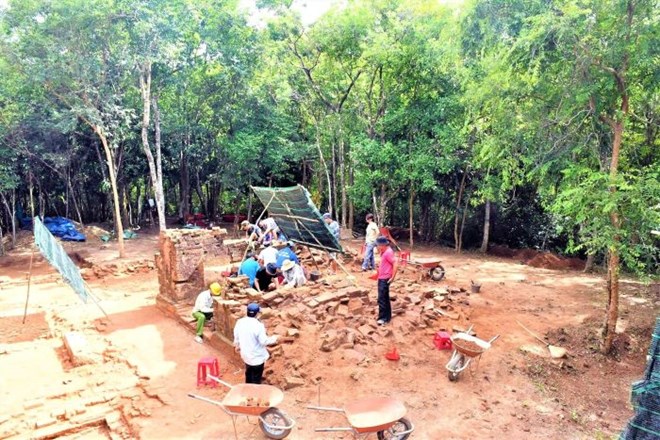
Excavating the L tower group at My Son temple, discovering traces of 13th-century architecture. Photo: Chi Dai
On August 5, Mr. Nguyen Cong Khiet - Director of the My Son World Cultural Heritage Management Board, Department of Culture, Sports and Tourism of Da Nang - said that the unit has coordinated with the Institute of Monuments Conservation, Institute of Archaeology and CM Lerici Foundation (Italy) to announce the preliminary results of the excavation of Tower Group L at My Son Temple Complex.
The excavation was carried out from May 9 to July 30, 2025, covering an area of 150 square meters. The excavation was led by Dr. Nguyen Ngoc Quy (Institute of Archaeology). This is the second excavation in Group L, after the first in 2019.
This excavation aims to expand the survey area to the eastern hillside, clarify the brick wall structure surrounding the L1 and L2 architecture, study the morphology of roof tiles and related ceramic artifacts, remove collapsed parts and complete the drawings for the conservation and restoration project of the L architectural group.
According to Mr. Khiet, group L is located about 75m south of group BCD, on a small hilltop - a high position with strategic importance for observation and creating a prominent landscape.
Since the beginning of the 20th century, this site was recorded by Henri Parmentier (French Institute of the Far East) as a long, tiled room-shaped structure with two opposite openings.
The 2019 excavation by the CM Lerici Foundation uncovered the western foundation (L2), in addition to the previously known L1 structure. Both are located on an east-west axis, surrounded by walls.
During the two months of excavation, the layers of collapsed materials inside and around L1 were systematically peeled away, revealing the architecture, studying the sequence of collapse and changes over time.
Many pieces of pottery and roof tiles were found on the foundation and walkways around L1. Traces show that the tiled wooden roof collapsed early, followed by the walls, mainly due to bombing during the war.
Preliminary research results show that the L architecture is of late date (13th - early 14th century). The remaining brick structures need to be reinforced, protected in integrity and sustainability to serve the promotion of heritage value in the future.
“The excavation results and new discoveries in group L have contributed to identifying the value of late architecture at My Son heritage, expanding the architectural space of temples and towers and creating more sightseeing and research spots for the community,” said Mr. Nguyen Cong Khiet.
Source: https://laodong.vn/van-hoa-giai-tri/khai-quat-nhom-thap-l-tai-den-thap-my-son-phat-hien-dau-tich-kien-truc-the-ky-13-1552521.ldo



![[Photo] Lam Dong: Images of damage after a suspected lake burst in Tuy Phong](https://vphoto.vietnam.vn/thumb/1200x675/vietnam/resource/IMAGE/2025/11/02/1762078736805_8e7f5424f473782d2162-5118-jpg.webp)



![[Photo] President Luong Cuong receives US Secretary of War Pete Hegseth](https://vphoto.vietnam.vn/thumb/1200x675/vietnam/resource/IMAGE/2025/11/02/1762089839868_ndo_br_1-jpg.webp)
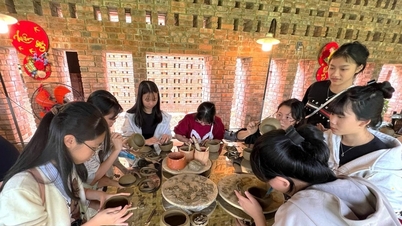










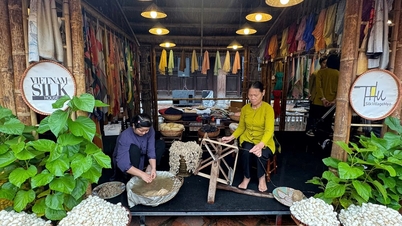
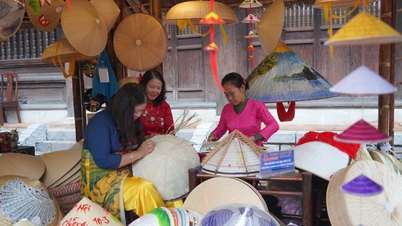

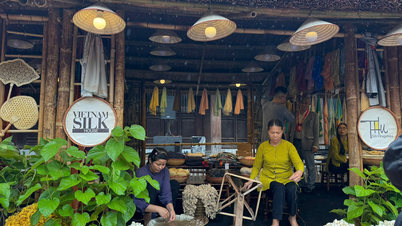

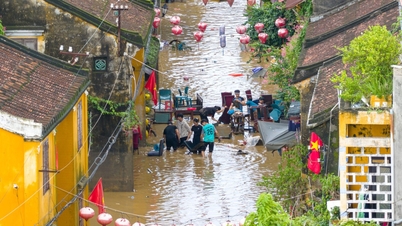

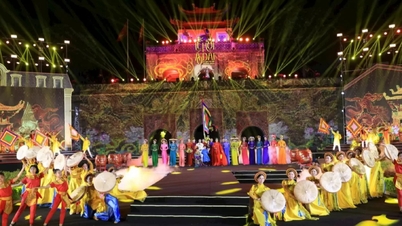

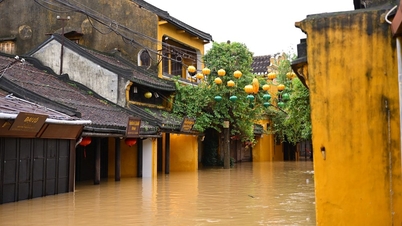






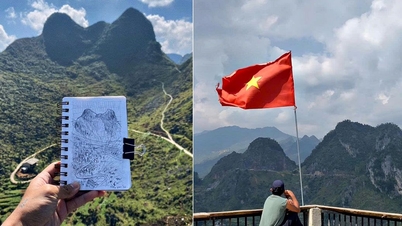
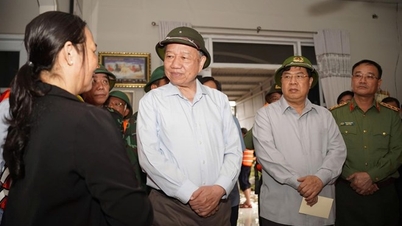








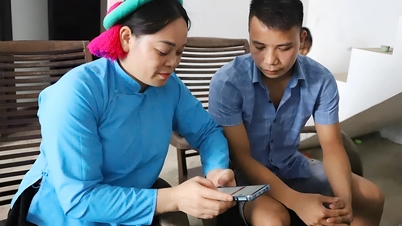







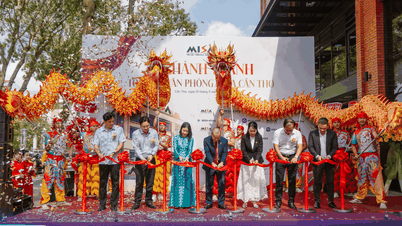



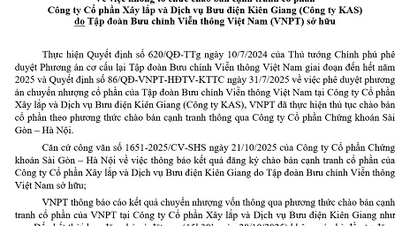


















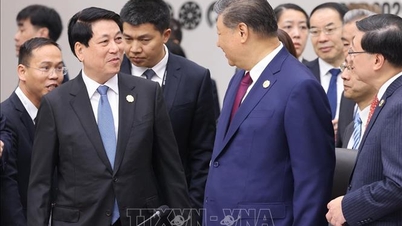

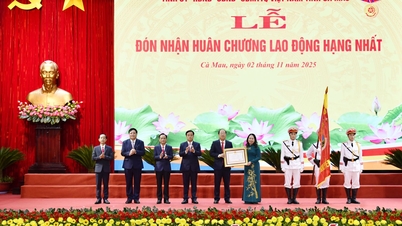























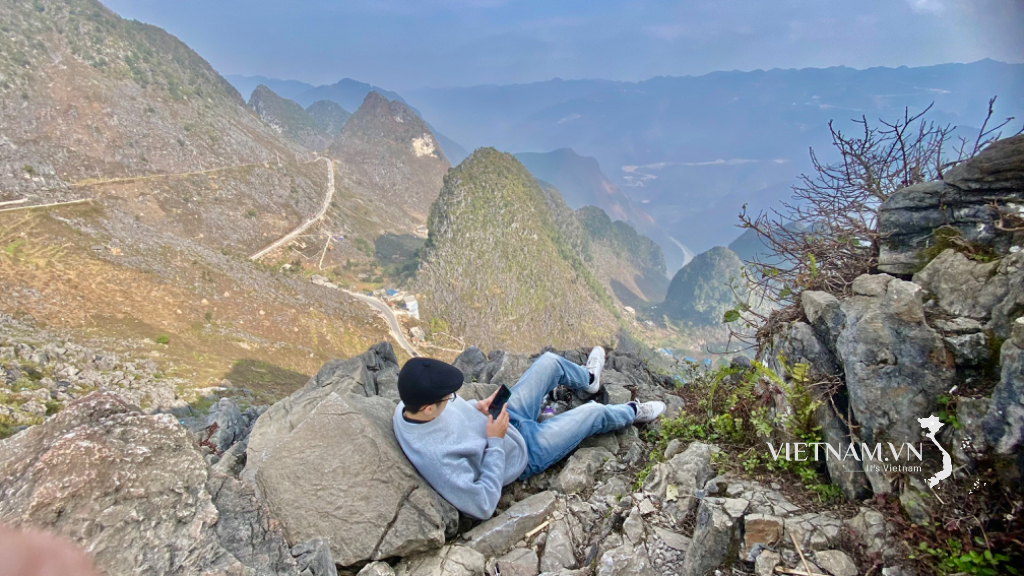


Comment (0)